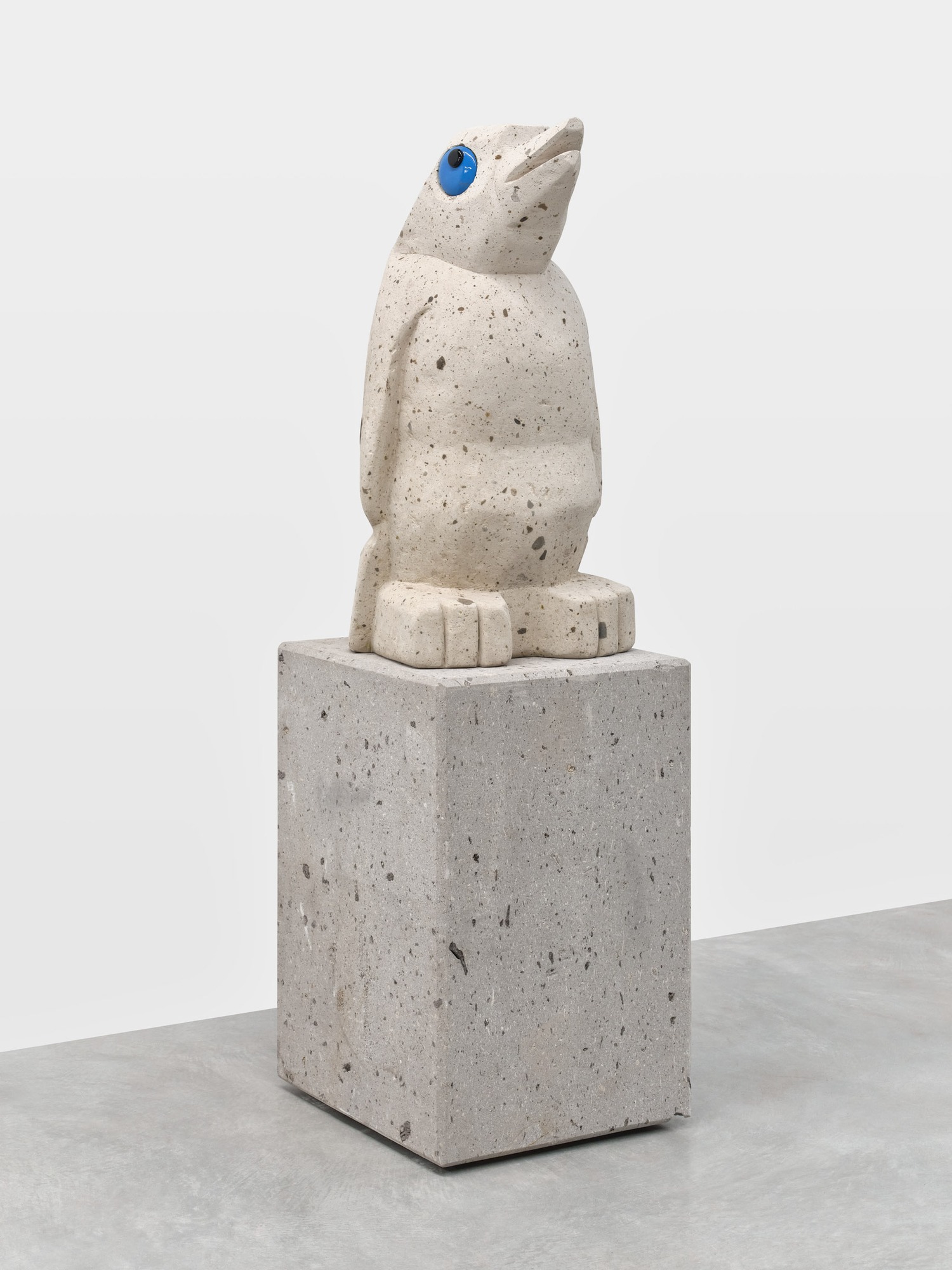The Good, the Bad, and the Ugly

We humans – in all our beauty and cruelty – are the main characters in Olaf Breuning’s artistic universe of photography, video, installations, and sculptures.
by
Claudio Vogt – von Bartha Team
Olaf Breuning’s art revolves around bodies, their ephemerality, and our preconceptions. In particular, iconic group photos from the early 2000s, such as Apes, The Band, Bully, and others, come to mind when we think of his work. Breuning has done a handful of those. The groups are set up as if on display in a natural history museum, staged with costumes or props. Through those, the Swiss artist, living and working in Upstate New York, exposes our stereotypic gaze, our judgments, and the clichés we jump on impulsively, like predators that pounce on their prey. Are we really such dim creatures, one might ask?

Olaf Breuning: Bully, 2000

Apes, 2001

The Band, 2007
In recent years, Breuning’s interests and art have shifted, without compromising his pointed humor or losing his grip on the abyss of human behavior. Our toxic relationship with nature and the environmental crisis now play a bigger role in his work. As we have set the planet on fire, and Breuning holds the mirror up to us.
All of the above-mentioned themes are reflected in his latest series of sculptures of Sad and Worried Animals. A fearful monkey, a frightened seahorse, an anxious giraffe, a depressed porcupine, and a disheartened penguin. These sculptures, inspired by lucky charms carved from soapstone, are just a few examples of Breuning’s animal kingdom threatened by human behavior.
“We, humans, change the planet, and as a dominating species, we first think about ourselves. The animals have nothing to say. They all frown and look to the sky, and they wait for the big ‘hammer’ to drop down on them.”
Olaf Breuning

Olaf Breuning
Porcupine, 2024
American black stone, ceramic
101.6 x 121.9 x 68.6 cm

Olaf Breuning
Ape, 2024
Cantera coffee stone, ceramic
144.8 x 96.5 x 63.5 cm

Olaf Breuning
Bird, 2024
Lava Stone, ceramic
154.9 x 50.8 x 44.5 cm

Olaf Breuning
Seahorse, 2024
Pink cantera stone, ceramic, cantera stone
160 x 70 x 30.5 cm

Olaf Breuning
Giraffe, 2024
Orange cantera stone, ceramic, cantera stone
149.9 x 59.7 x 45.7 cm

Olaf Breuning
Pelican's Sister, 2024
Cantera stone, ceramic
157.5 x 57.1 x 38.1 cm
Breuning, who explored the human psyche in his early work, now takes us on a journey into the psyche of animals, exploring the depth of their feelings, often overshadowed by our human-centric understanding of the world. With a blend of whimsy and melancholy, his sculptures depict animals in various states of sadness and anxiety due to the increasing impact of climate change on their natural habitat. These creatures, wild and domesticated, reveal a vulnerability that is both touching and disconcerting. They evoke empathy and raise questions about our stewardship of the natural world.
By humanizing these animals, Breuning challenges us to recognize the impact of our actions on their, and our, well-being and the broader ecological balance. Albert Einstein supposedly said that once the bees disappear, humans will follow shortly afterward. To save us, we must save them, and think beyond our own interests—a crucial reminder in this era often characterized by our species’ self-centeredness.
Olaf Breuning in his studio, speaking of his practice, language, and how is work is connected to this world.
Olaf Breuning’s* Sad and Worried Animals* are on view at Art Basel Miami Beach, together with works by Marina Adams, at our booth C1. Please come by and say hi from December 4 to 8, 2024.

